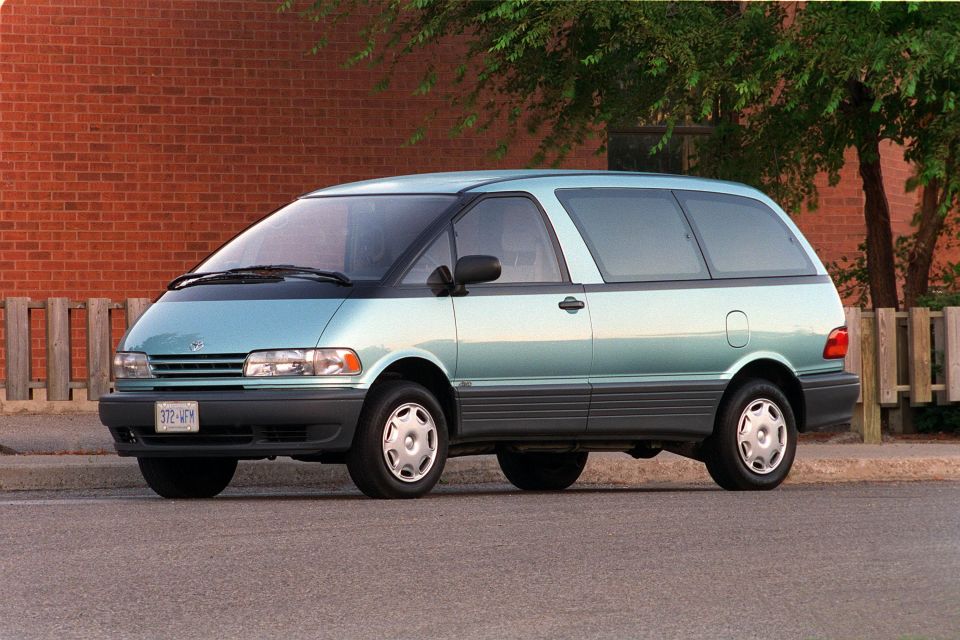

Damion Smy
Nissan Juke EV will use Leaf platform, due in 2026 - report
11 Hours Ago

Journalist
Toyota, through its Calty Design Research division, has been designing cars in the US for half a century.
To celebrate this milestone, it has an unveiled a new moon buggy-inspired concept, as well as a selection of images of past concepts and production vehicles.
Details about the Baby Lunar Cruiser are limited, but we do know its design is inspired by both the original FJ40 Land Cruiser and the Lunar Cruiser that Toyota is developing with the JAXA, the Japanese space agency.


The concept has an electric motor in each wheel, is controlled by a pair of joysticks, and rides on a quartet of air-less tyres. The car’s protruding glass canopy is said to offer excellent outward vision. A panoramic augmented reality display on the dashboard aims to make navigating over rough terrain a cinch.
Other features in the cabin include lightweight spaceframe seats, and MOLLE panels for a high degree of flexibility.
Calty was established without much fanfare in 1973 by Shoichiro Toyoda and Eiji Toyoda in El Segundo, California. A few years later, it moved down the coast to the trendier Newport Beach area. Both sites are within the sprawling Los Angeles metro area.


With its original remit to conduct “research on future trends in design”, Calty largely worked quietly in the background.
Projects during these early years included a design proposal based on the FJ40 Land Cruiser, and a travel trailer concept in 1975.
Today Toyota also revealed a number of Calty’s previously unseen performance concepts. The first was the 1982 MX-1 mid-engine coupe with a very European pair of scissor doors.
The second is the 1983 MX-2, which had an aerodynamic long-tail body, lightweight fibre-glass reinforced plastic shell, gullwing doors, and a swing arm steering wheel that allowed it be both left- and right-hand drive.

The last is Calty’s proposal for the 1993 fourth-generation Supra.
Toyota wanted the A80 Supra to be a sportier vehicle than its grand touring-focussed predecessor, and Calty answered the call with a rounded coupe boasting a power bulge on the bonnet to accommodate the straight-six engine.
Calty’s first production vehicle was the second-generation Celica, unveiled in 1977. It also claims credit for the 1978 N30 Hilux.

Up until the turn of the millennium, Calty’s production design credits were limited, but, you could argue, they were some of the most expressive and forward-thinking models in Toyota’s range at the time.
Vehicles that to fit into this bucket include the 1989 fifth-generation Celica with its “super round” styling, the egg-shaped mid-engined 1990 Tarago/Previa/Estima people mover, the well-regarded 1991 Lexus SC/Toyota Soarer coupe, and 1997’s first-generation Prius sedan.
Since the turn of the century, Toyota has created more and more vehicles either designed primarily for the North American market, or solely with the US in mind.


And many of these cars — like the Tundra, Sequoia, Highlander/Kluger, Sienna, and Avalon — are, unsurprisingly, penned in the US.
Despite Calty’s growing importance to Toyota’s product portfolio, it’s said to currently employ only 97 staff across its two facilities: one in California, the other just outside of Detroit.
Where expert car reviews meet expert car buying – CarExpert gives you trusted advice, personalised service and real savings on your next new car.
Derek Fung would love to tell you about his multiple degrees, but he's too busy writing up some news right now. In his spare time Derek loves chasing automotive rabbits down the hole. Based in New York, New York, Derek loves to travel and is very much a window not an aisle person.


Damion Smy
11 Hours Ago


Damion Smy
14 Hours Ago


Damion Smy
18 Hours Ago


Damion Smy
20 Hours Ago


Damion Smy
20 Hours Ago


Damion Smy
21 Hours Ago